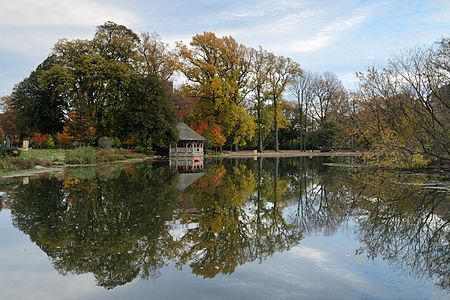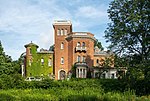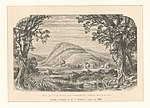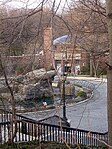Prospect Park (Brooklyn)

Prospect Park is an urban park in Brooklyn, New York City. The park is situated between the neighborhoods of Park Slope, Prospect Heights, Prospect Lefferts Gardens, Flatbush, and Windsor Terrace, and is adjacent to the Brooklyn Museum, Grand Army Plaza, and the Brooklyn Botanic Garden. With an area of 526 acres (213 ha), Prospect Park is the second largest public park in Brooklyn, behind Marine Park. First proposed in legislation passed in 1859, Prospect Park was laid out by Frederick Law Olmsted and Calvert Vaux, who also helped design Manhattan's Central Park, following various changes to its design. Prospect Park opened in 1867, though it was not substantially complete until 1873. The park subsequently underwent numerous modifications and expansions to its facilities. Several additions to the park were completed in the 1890s, in the City Beautiful architectural movement. In the early 20th century, New York City Department of Parks and Recreation (NYC Parks) commissioner Robert Moses started a program to clean up Prospect Park. A period of decline in the late 20th century spurred the creation of the Prospect Park Alliance, which refurbished many parts of the park starting in the late 1980s. Main attractions of the park include the 90-acre (36 ha) Long Meadow; the Picnic House; Litchfield Villa; Prospect Park Zoo; the Boathouse; Concert Grove; Brooklyn's only lake, covering 60 acres (24 ha); and the Prospect Park Bandshell that hosts free outdoor concerts in the summertime. The park also has sports facilities, including the Prospect Park Tennis Center, basketball courts, baseball fields, soccer fields, and the New York Pétanque Club in the Parade Ground. There is also a private Society of Friends (Quaker) cemetery on Quaker Hill near the ball fields. In addition, Prospect Park is part of the Brooklyn-Queens Greenway, a network of green spaces that stretch across western Long Island. Prospect Park was designated a New York City scenic landmark on November 25, 1975, and was listed on the National Register of Historic Places on September 17, 1980. The park is operated by the Prospect Park Alliance and NYC Parks.
Excerpt from the Wikipedia article Prospect Park (Brooklyn) (License: CC BY-SA 3.0, Authors, Images).Prospect Park (Brooklyn)
Center Drive, New York Brooklyn
Geographical coordinates (GPS) Address Nearby Places Show on map
Geographical coordinates (GPS)
| Latitude | Longitude |
|---|---|
| N 40.661666666667 ° | E -73.970833333333 ° |
Address
Center Drive
Center Drive
11215 New York, Brooklyn
New York, United States
Open on Google Maps










